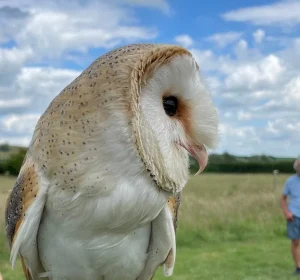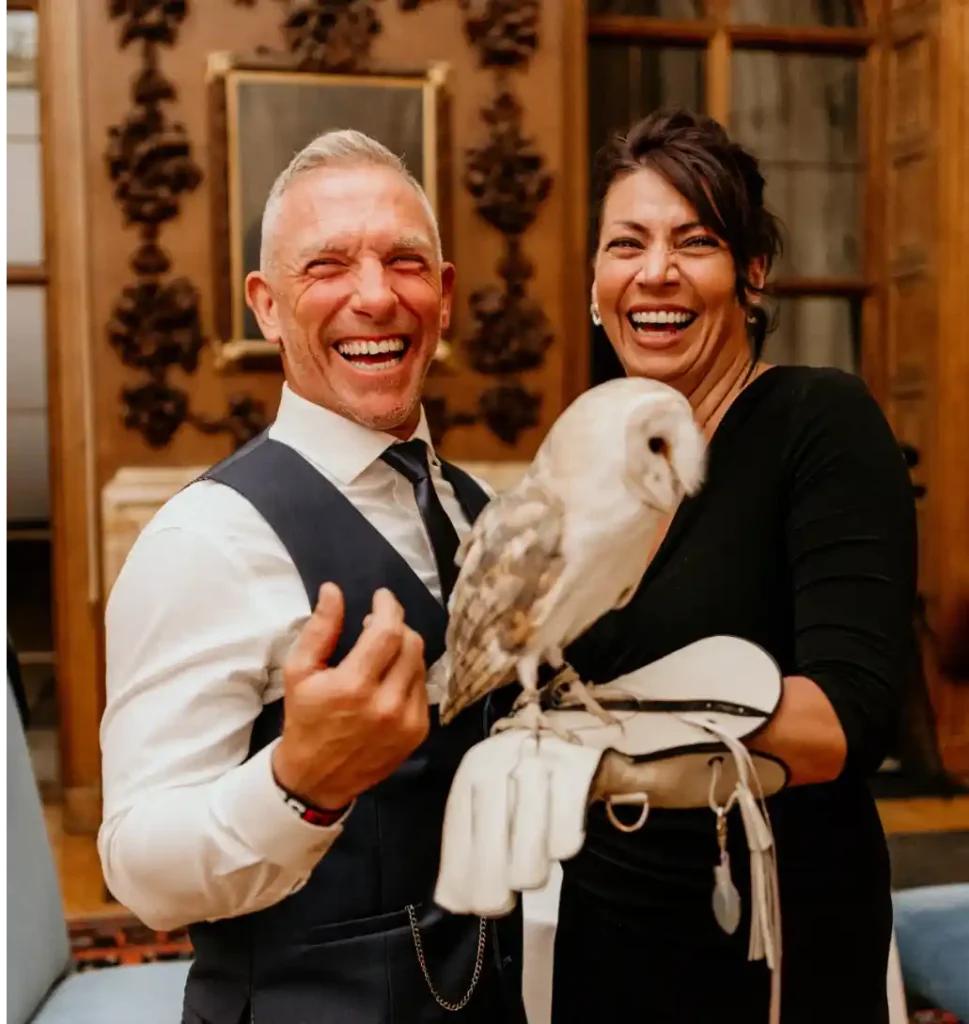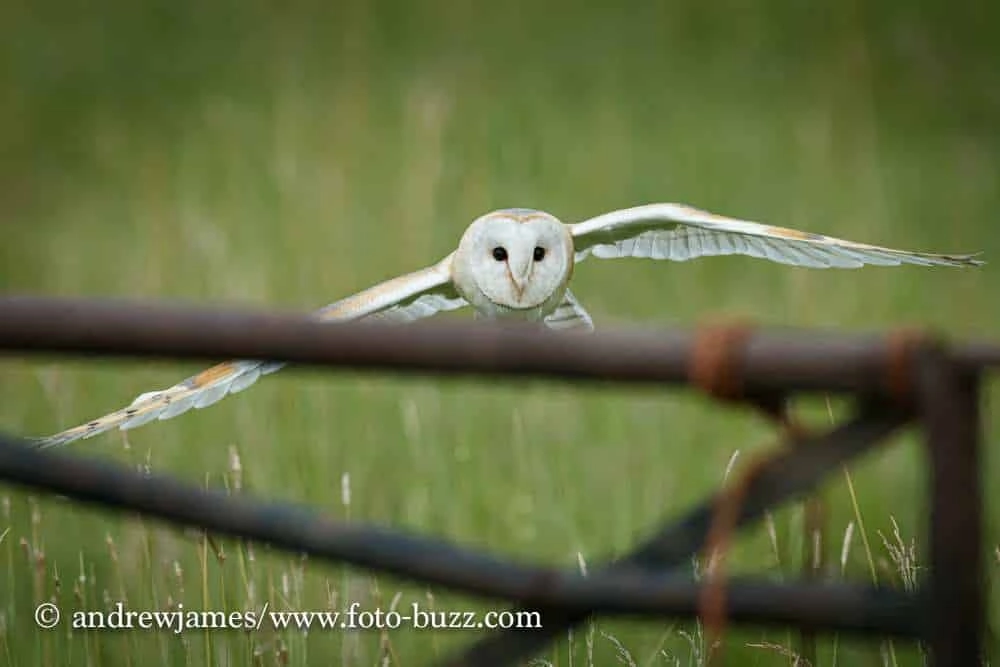The Barn Owl – The Ghost of the Farmland Night
With its pale, heart-shaped face and graceful, silent flight, the Barn Owl (Tyto alba) is one of the most recognisable and beloved owls in the world. Often called the “ghost owl” or “white owl,” it glides like a spirit over fields and meadows in search of prey.
For centuries, its eerie calls and ghostly appearance have made it both revered and feared. Yet behind the myths lies a fascinating, hardworking hunter – a vital ally to farmers and a cherished symbol of the countryside.
Appearance and Adaptations
Barn Owls, more than many other owls, rely on their heart-shaped facial disc to funnel sound to their ears. They have exceptional powers of hearing. Our own Juliet amazed us by tracking down and catching a vole, having initially heard it from 70 meters away. Their plumage is soft and downy, specially adapted for silent flight.
Seen in daylight, their white feathers almost glow, giving rise to names like “ghost owl” and “church owl.” At night, this pale figure sweeping across a moonlit field can appear supernatural to the uninitiated.
Their wingbeats are almost soundless, thanks to serrated edges on their flight feathers – an evolutionary marvel that allows them to approach prey undetected.
Habitat and Range
They are among the most widespread birds on Earth, living on every continent except Antarctica. They thrive in open countryside – farmland, grasslands, and meadows – where small mammals are abundant.
They are also strongly associated with human settlements. Barns, church towers, and old stone buildings often provide roosting and nesting sites. This connection gave them their English name: Barn Owl.
Quick Facts – Barn Owl (Tyto alba)
- Size: 33–39 cm tall, wingspan up to 95 cm
- Weight: Around 350 grams (males lighter than females)
- Appearance: Pale, golden-tan back, snowy white underparts, heart-shaped facial disc
- Eyes: Dark and forward-facing, excellent for night vision
- Range: Found on every continent except Antarctica
- Diet: Small mammals, especially voles and mice
- Voice: Harsh screeches, hisses, and clicks – not the “hoot” of other owls
- Lifespan: 4 years on average in the wild, longer in captivity
H unting and Diet
unting and Diet
Barn Owls are supreme rodent hunters. Their favourite meal is the field vole, but they also take mice, shrews, and young rats. A single Barn Owl can eat 3–4 rodents a night, making them highly beneficial to farmers.
They hunt by quartering low over fields, listening intently. Their asymmetrical ears allow them to pinpoint the faintest rustle of prey even in complete darkness. Once they’ve locked onto a sound, they swoop silently, talons extended, with deadly accuracy.
Did You Know?
A Barn Owl can hunt successfully guided purely by sound.
Nesting and Breeding
They often nest in hollow trees, barns, church towers, or specially provided nest boxes.
The female lays 4–6 eggs, usually in spring, and incubates them for around 30 days. The male provides food during this time.
Unlike many birds, Barn Owls don’t build nests. Instead, they lay eggs on a simple bed of regurgitated pellets and debris.
Young Barn Owls grow quickly, fledging at around 8–10 weeks, though parents continue feeding them for some time afterwards.
 The Barn Owl’s Voice
The Barn Owl’s Voice
Unlike the mellow “hoot” of a Tawny Owl, the Barn Owl is best known for its long, raspy screech – a sound that has startled many an unsuspecting traveller at night. They also hiss and click, adding to their eerie reputation.
This unusual voice, combined with their ghostly appearance, has long associated them with the supernatural.
Barn Owls in Folklore and Culture
The Barn Owl has inspired myths and stories across cultures:
- Britain: Once considered an omen of death if it screeched near a house. Farmers, however, valued them as “mouse hunters.”
- Medieval Europe: Barn Owls were often linked with witches and dark magic. Their silent, pale form made them a symbol of mystery.
- Native American cultures: Opinions varied – some tribes saw owls as wise protectors, others as harbingers of misfortune.
- Modern times: Today, the Barn Owl is widely admired, a favourite of conservation groups and a symbol of unspoiled countryside.
- Wedding Ring Bearer: Now popular as a surprise way to deliver the rings at weddings . Click for Details
Conservation and Threats
Although widespread globally, Barn Owls face challenges:
- Habitat loss – Modern intensive farming reduces rough grassland where voles and mice thrive.
- Loss of nesting sites – Old barns and hollow trees are increasingly scarce.
- Road deaths – Many Barn Owls are struck by vehicles while hunting along road verges.
- Pesticides – Chemicals can reduce prey numbers and poison food chains.
Thankfully, conservation efforts have made a difference. Nest box programs have helped stabilise populations in many areas, and farmers are encouraged to keep rough grass margins for hunting owls.
Barn Owls Screech
Why are Barn Owls called ghost owls?
Their white feathers, silent flight, and eerie screeches earned them nicknames like ghost owl and church owl in European folklore. See more images
What do Barn Owls eat?
Barn Owls mainly hunt small mammals such as voles, mice, shrews, and rats, often catching several each night.
Do Barn Owls hoot?
No, Barn Owls do not hoot. Instead, they produce long, raspy screeches, hisses, and clicks.
Where do Barn Owls live?
Barn Owls live worldwide in open countryside, farmland, meadows, and grasslands. They often nest in barns, church towers, and hollow trees.
Are Barn Owls endangered?
Barn Owls are widespread globally but local populations face threats from habitat loss, road deaths, and loss of nesting sites.
Why the Barn Owl Matters
Barn Owls are not only beautiful but ecologically vital. By controlling rodent numbers naturally, they reduce the need for harmful poisons. A family of Barn Owls can consume thousands of small mammals in a single breeding season – a natural form of pest control.
They also hold cultural value, inspiring art, literature, and conservation passion worldwide.
How to Spot a Barn Owl
Unlike the elusive Tawny Owl, Barn Owls are often seen at dusk, gliding low over meadows and hedgerows. Look for:
- A pale, ghostly form flying silently in the evening light
- Harsh screeches instead of hoots
- Pellets beneath barns or perches, containing tiny bones of their prey



